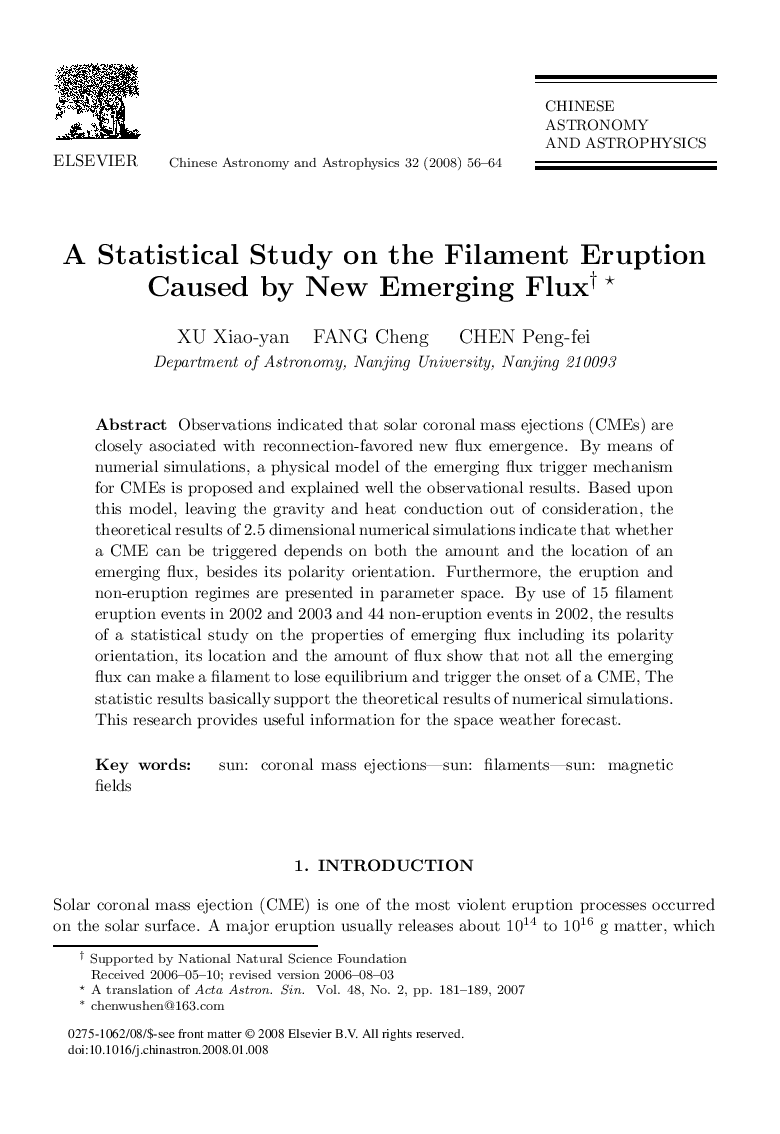| Article ID | Journal | Published Year | Pages | File Type |
|---|---|---|---|---|
| 1772030 | Chinese Astronomy and Astrophysics | 2008 | 9 Pages |
Observations indicated that solar coronal mass ejections (CMEs) are closely asociated with reconnection-favored new flux emergence. By means of numerial simulations, a physical model of the emerging flux trigger mechanism for CMEs is proposed and explained well the observational results. Based upon this model, leaving the gravity and heat conduction out of consideration, the theoretical results of 2.5 dimensional numerical simulations indicate that whether a CME can be triggered depends on both the amount and the location of an emerging flux, besides its polarity orientation. Furthermore, the eruption and non-eruption regimes are presented in parameter space. By use of 15 filament eruption events in 2002 and 2003 and 44 non-eruption events in 2002, the results of a statistical study on the properties of emerging flux including its polarity orientation, its location and the amount of flux show that not all the emerging flux can make a filament to lose equilibrium and trigger the onset of a CME, The statistic results basically support the theoretical results of numerical simulations. This research provides useful information for the space weather forecast.
